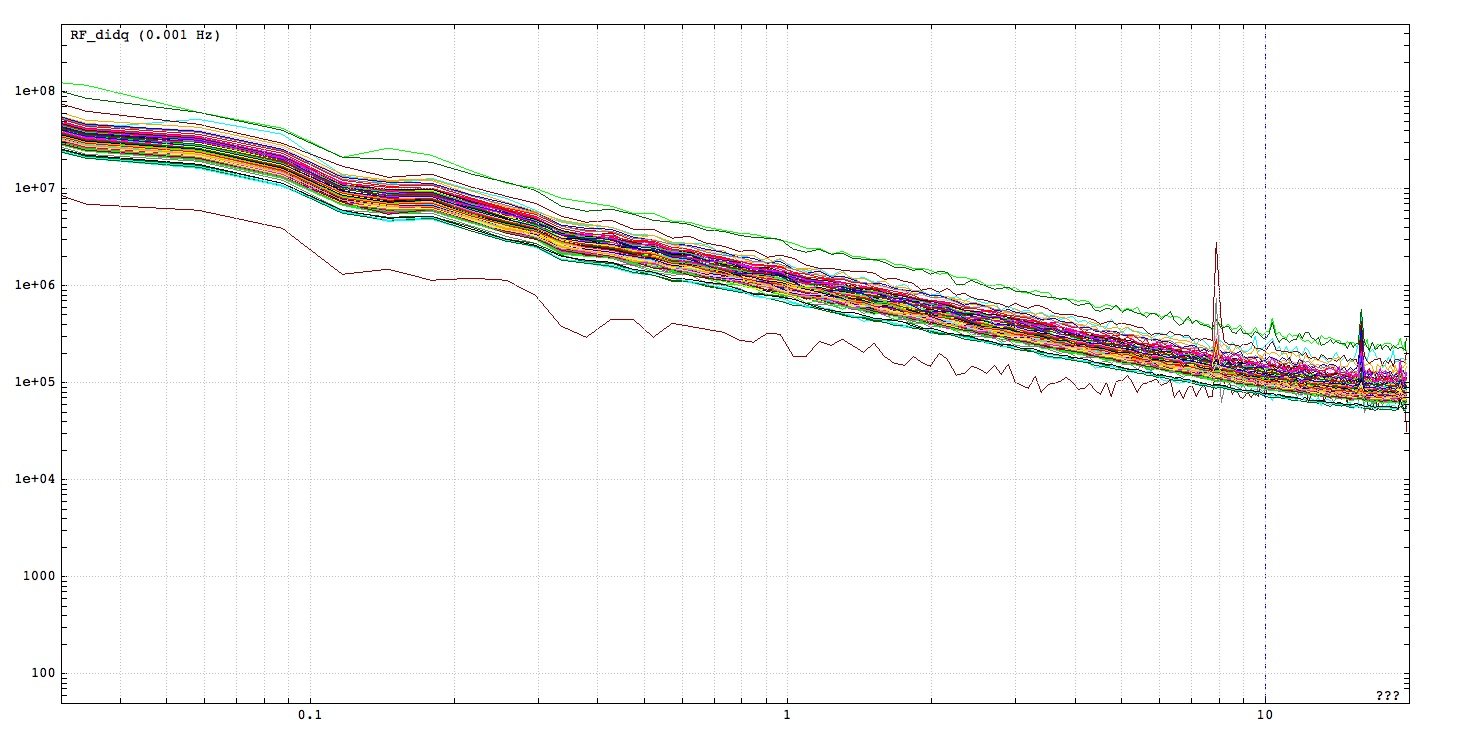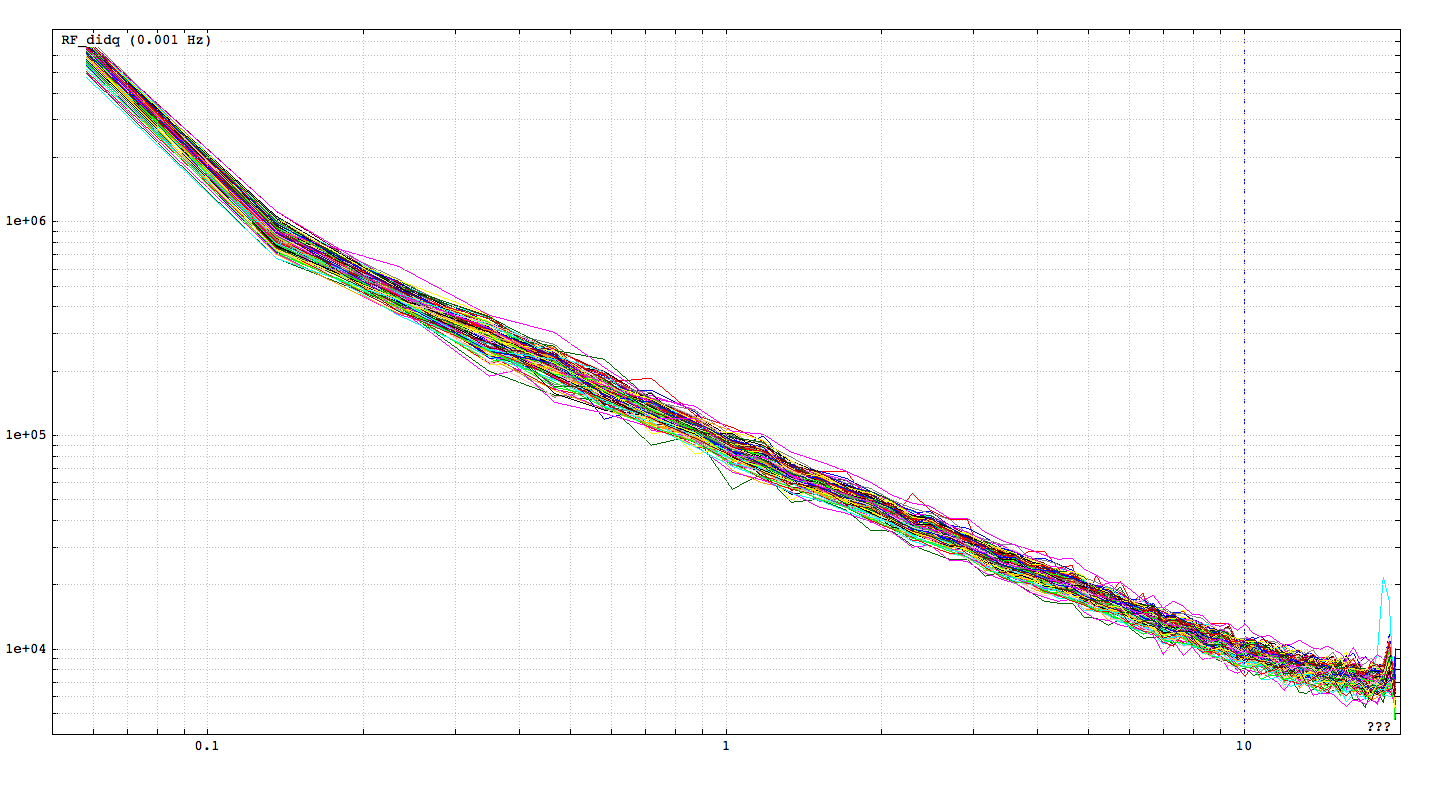|
Size: 322
Comment:
|
Size: 17200
Comment:
|
| Deletions are marked like this. | Additions are marked like this. |
| Line 1: | Line 1: |
| == Tuesday 30th September 2014 == '''16h00.''' Alessandro (remote). Checked J5 in the last run: was 351 mbar. Today Andrea has measured J5=350mbar. OK, the 3He is still there. Mixture fluxes are still: on J4 (3000mbar) -20mbar/min; on J1 (J4=3000mbar, ev1 closed) +2.5mbar/min. Like last time (run 7, 14/01/2014). OK. |
[[NikaRun9|Back to the NIKA run 9]] <<TableOfContents(3)>> == September 30th 2014 == '''8h30 UT:''' Andrea arrives to the 30m to cool down the NIKA cryostat and to prepare all the facilities for the polarisation run. '''STATUS OF THE INSTRUMENT''' '''9h00 UT:''' Status of the Camera pulse tube : J1=96.3mbar - J2=329.8mbar - J3=297.3mbar - J4=160mbar - J5=350mbar '''09h30 UT:''' Cryostat connected to the leak detector. Residual pressure in the cryostat 16mbar. '''10h00 UT:''' Pumped the dilution circuit (until Jpi=2.2x10e-2mbar). Trap pumped. '''11h UT:''' Pressions stables. The zero on J1 was -41mbar. Reset it again to 0mbar by changing the config file. '''11h30 UT:''' M5 and M6 mounted. Optical alignment of the cryostat with Santiago, OK. LUNCH TIME. '''12h30 UT:''' First Leak test. From 3x10e-9 to 2x10e-8, little scary, I'll do it again before switching on the pulse tube. '''13h00 UT:''' Warm impedance test: between 18 and 20mbar/min at 2.9bar (ev1 closed). Consistent with the last cooling down. '''13h15 UT:''' Circulation throught the capillar starts. '''14h00 UT.''' Pumped ev18 for a few minutes with the turbo pump (down to 2e-4mbar). We had 0.2mbar in ev18. REMEMBER NOT TO TOUCH AGAIN ev18 from now on. '''15h45 UT.''' Second Leak test. From 9.3x10e-9 to 2.5x10e-8. LET'S CONTINUE! '''16h30 UT.''' Pulse Tube on. Low pressure and High pressure OK. Mixture circulates at 2.95bar (J4) and 950mbar (J2 with preref on). '''20h05 UT:''' Lowering to 850mbar. Keep this value for the night. '''20h15 UT:''' T4K=278K. Tstill=265K. Good night and good luck (to myself) == October 1st 2014 == Cooling down still going on. Tests on acquisition software going on. We found few problems still to be fixed. Lots of e-mails and skype conversations between IRAM and Cardiff. The status is resumed in the '''STATUS OF THE POLARISATION FACILITIES''' '''STATUS OF THE INSTRUMENT''' '''05h40 UT:''' T4K=90K. Tstill=75K. Flux set at 630mbar. '''07h00 UT:''' T4K=31K. Tstill=40K. Flux set at 530mbar. '''10h35 UT:''' T4K=25K. Tstill=31K. Flux set at 360mbar. Nitrogen refill. '''14h45 UT:''' T4K=7.2K. Tstill=10.3K. Flux set at 300mbar. Since the still and the mixing chamber are cooling down slowly, we decide to pump directly from ev17. The slope is much better. '''17h35 UT:''' T4K=5.6K. Tstill=4.74K, R_BM=1.315kOhm Flux at 172mbar. '''Condensation Started'''. '''21h40 UT:''' '''100mK!!!''' '''22h20 UT:''' Cold amplifiers on. Leak detector off. Small Nitrogen refill. We are out of IRAM nitrogen until tomorrow morning. Good Night. '''STATUS OF THE POLARISATION FACILITIES''' The new multi-layers Half Wave Plate is still in fabrication in Cardiff: all the capacitive stacks has been manufactured and tested showing results very close to expectations. The fabrication of the inductive stacks is in progress. Today at 4pm (French time) it was almost done. The plan is to set up and test the final HWP on Friday. If everything goes well someone from Cardiff will visit the telescope with the HWP on Monday or Tuesday. Therefore we have still the possibility to put the new HWP in front of the cryostat in the beginning of the observing campaign. If some delay occurs (manufacturing problems, low performance, etc...), we still have two backup solutions: 1) We use the old saphir single plate HWP which is here at the telescope. 2) People from Cardiff can give us two mesh HWPs each working in one NIKA band. The performance of these plates are presented in the two plots below. The performances are higher wrt the old saphir single plate even for the 1mm channel (much better for the 2mm channel). {{attachment:hwp1.png||width=900}} {{attachment:hwp2.png||width=900}} == October 2nd 2014 == '''04h40 UT:''' Stop Compressor. T_BM=88mK , T_still=690mK, T_4K=5.18K, J4 at 340mbar. '''06h20 UT:''' T_BM=89.2mK pretty stable (DeltaT_BM about 0.1mK over 1h), T_still=750mK (DeltaT_still about 50mK over 1h), T_4K=5.26K (DeltaT_4K about 100mK over 1h), J4 at 480mbar increasing (slope 70mbar/1h). '''08h00 UT:''' 100mK stage temperature regulated at 150mK. '''20h00 UT:''' T_BM=150mK regulated, T_still=650mK stable, T_4K=5.18K (DeltaT_4K about 300mK over 12h), J4 at 540mbar; stable. == October 3rd 2014 == Nicolas and Alessia joined the telescope. '''STATUS OF THE INSTRUMENT''' '''06h10 UT:''' T_BM=150mK regulated, T_still=650mK with 2mK variation over 12h, T_4K=5.18K (DeltaT_4K about 300mK over 12h), J4 at 540mbar; stable. '''21h25 UT:''' T_BM=150mK regulated, T_still=687mK stable, T_4K=5.23K (DeltaT_4K about 15mK over 12h), J4 at 550mbar; stable. '''First preliminary configuration with the window:''' div_kid set at 16 which means a sampling frequency equal to 59.6Hz. If it works correctly we will never change this from here after. '''1mm''' DAC gains: 20-20-20-35-44. General niveau: 6., Att. inj. 25dB (mounted into the NIKEL between the first ampli and the mixer, not changeable) + 5db at "In from Cryo" '''2mm''' DAC gains: 20-23-20-33-50. General niveau: 5., Att. inj. 20dB (mounted into the NIKEL between the first ampli and the mixer, not changeable) + 5db at "In from Cryo" {{attachment:bal1mm.png||width=900}} {{attachment:bal2mm.png||width=900}} The level of the white noise is similar with respect to the one measured in the same conditions during the previous run, BUT Strong and several peaks are present. TO BE FIXED. {{attachment:noise1mm.png||width=900}} {{attachment:noise2mm.png||width=900}} '''STATUS OF THE POLARISATION FACILITIES''' After the test of the HWP C stacks Cardiff measured the L stacks and they seemed to perform reasonably well. They clamped together the L and C stacks and they did preliminary tests rotating the stacks 'by hand': - the transmissions integrated across the band are within ~1.5%; - the cross-pol, again integrated, ~5%; The 'clamped' stacks have been sent to the clean room people, just a few minutes before they left.. and it will be now hot pressed and anti-reflection coated! On Monday morning the mesh-HWP will be taken out the oven, cut to the 11.9 cm required diameter, and finally tested with the FTS. the performance in this final version could be better due to the presence of anti reflection coating and the fact that the 1mm and 2mm bands are much narrower than the spectral band tested with the FTS. Aurelien Bideaud volunteered to come up at IRAM on Tuesday with the waveplate for staying a couple of days. We are organising flights and accomodation. Thanks Aurelien!!! == October 4th 2014 == '''09h00 UT:''' Nitrogen refill in the trap Connections fixed in the HWP modulator, it turns and the top signal is present. Finally! Last modifications of the acquisition software still not working. I am using the SVN version 5360. Noise is still present in the timelines for both arrays. It seems not to depend on acquisition software (noise is also present in the I and Q signal). I tried several things to fix it without success: 1) Changing the modulation and the sampling frequency. 2) Playing with cables 3) Stopping the 100mK temperature control 4) Playing with a drill close to the cryostat. 5) trying to attenuate the vibrations of the cryostat due to the pumps. '''19h25 UT:''' T_BM=150mK regulated, T_still=672mK with 10mK variation over 12h, T_4K=5.22K (DeltaT_4K about 10mK over 12h), J4 at 547mbar; stable. Alessia and Nico have been working on the pipeline and the set up. == October 5th 2014 == '''11h00 UT:''' T_BM=150mK regulated, T_still=665mK with 7mK variation over 12h, T_4K=5.23K (DeltaT_4K about 1mK over 12h), J4 at 554mbar; stable. The HWP modulator has been installed in front of NIKA. The prism fits well too. == October 6th 2014 == '''12h30 UT:''' T_BM=150mK regulated, T_still=659mK with 5mK variation over 12h, T_4K=5.16K (DeltaT_4K about 7mK over 12h), J4 at 560mbar; stable. '''-''' We created two parameters files: the first "run9.txt "corresponding to the same parameters of run8.txt (made on the sky) but with the new syntax for the instrument and a higher sampling frequency. The second is "run9_300K.txt" corresponding to the best tuning for 300K background (cryostat window open to the cabin) '''-'''The strange pulses observed in the signal for both arrays are still present today . Yesterday morning for few hours this signal was strongly attenuated (almost disappeared). Then in the afternoon it appears again. In the next two plot We show the comparison between the spectrum made on 18 random pixels between yesterday and this morning {{attachment:pw_extract_X_2014_10_06_10h20m09_man.png||width=900}} {{attachment:pw_extract_X_2014_10_05_12h16m17_0172_I_1633+382.png||width=900}} == October 7th 2014 == ''' - ''' Aurelien, Vincent and the HWP arrived at the telescope. We installed the HWP in front of the cryostat. The Idea is never to touch at that even for temperature measurements. We have some plot on the HWP test performed in Cardiff with some results showing the integrated transmission in the two NIKA channels: {{attachment:nikahwp.png||width=900}} ''' - ''' Parasitic signal problems solved! We found that the origin of the periodic signal was the MM3. It was stopped and the signal became clean again. The pratical consequence is that we cannot directly monitor the temperature of the cryostat. In addition the control of the temperature is off making the arrays colder. The observation temperature for this night is about 90mK. '''15h30 UT: EYE IN THE SKY.....FINALLY!''' We start with the NIKA sampling frequency of about 59 Hz. Noise for 40 degrees elevation with 0.44 (1mm), 0.29 (2mm) opacity. Remember that the 300K HWP is in front of the cryostat (eps<0.13 ?). {{attachment:noise20141007_1mm.png||width=900}} {{attachment:noise20141007_2mm.png||width=900}} '''WOLLASTON PRISM FIRST LIGHT ON URANUS!!!''' {{attachment:uranus_prism.png||width=900}} Observations: see summary in the [[D2DLogNika9| day to day logbook of observations]]; observation sheet written manually because the scans don't appear in TAPAS. == October 8th 2014 == '''02h10 UT:''' T_BM=90.1mK, T_still=749mK, T_4K=5.20K, J4 at 550mbar. I stop the MM3. Good night from Pico. ---- '''Technical time (from 10:00)''': Replacement of the MM3 with the spare one: * This didn't solve the problem (the 1,2,3 regular peaks are here and strong). * Amplitude of KIDs dropped when MM3 powered up. * Amplitude of KIDs dropped again when the MM3 started acquisition, and peaks re-appeared. * Original (calibrated) MM3 put back in place. HWP motor unit removed to try and adjust the clamping of the HWP: * '''Glitches stopped!!!''' Not sure if the electrical disconnection of the HWP motor unit is the reason for that. To be checked when re-connecting the unit. * Glitches back once the MM3 is properly configured (ranges,...), with motor unit still disconnected. MM3 parameters: * KIDs amplitude changing when Channel 1 Irange changes ; no change in phase ; impact both arrays. * Channel 2 reacts to modifications of channel 1 parameters (Irange). Previous tests made: * Shorted NIKELs: no visible glitches. * Measure with the VNA (NIKEL disconnected): glitches are here. Possible things to do during technical time to investigate the gliches issue: * Replace the iMACRT unit (need to access the pump unit, or find an adapted cable to connect it outside). * Check the voltages of the cold amplifiers: are they susceptible to a change of the Channel 1 Irange? '''20h00 UT:''' We start with the NIKA sampling frequency of about 47 Hz. Observations: see summary in the [[D2DLogNika9| day to day logbook of observations]]; observation sheet written manually because the scans don't appear in TAPAS. == October 9th 2014 == -- Installation of the diode calibrator on the elevation arm next to M3. Use slot of telescope stopped due to wind in the afternoon to test it. Signal of the diode very strong, can be attenuated with the control box, but much more noisy than the lab tests. We don't understand why. Remove the small mirror that we put at the centre of the vertex window to reflect the signal from the diode toward the instrument. Without the mirror we still see the diode very well, we check with an eccosorb on the diode horns that we indeed see the diode signal. Some power from the diode must be reflected toward the detectors by the polystyrene window, or more probably by the secondary mirror M2. Noise on the diode signal still there. -- The computer of the mppsync card (HWP modulation control) crashed 30 min before the beginning of the observations. Find another Linux computer to plug on the card and call Olivier to help install the software. The computer was put in the cabin and we observed a strong impact on pixels producing lines in the spectra. -- Big problem with tuning and acquisition. Alain worked hard on finding a patch. In the meantime, we observed using sweep in frequency before each scan. Strange spikes in the data. Then too much wind, stopped observation at about half of the observation slot. Tough night, possibly no scan with useful data. == October 10th 2014 == -- The tuning and acquisition work again. The Xcode must be changed because the origin of the problem has not been found. -- Several tests were made in the cabin to attenuate the RF noise in the power spectrum producing a ray at about 12Hz (the sampling frequency is 59.6Hz). -- Observations started at 18:00 UT. Noise for 40 degrees elevation with 0.6 (1mm), 0.45 (2mm) opacity. The 300K HWP and WG are in front of the cryostat. {{attachment:noise1mm20141010.png||width=900}} {{attachment:noise2mm20141010.png||width=900}} -- The communication with the antenna does not work as well as we want. Several annoying holes are present in the data. We chose not to use the antenna in the acquisition on archeops 35 and archeops 9 (the ones producing files in sami) and we keep in archeops 10 in order to monitor the antenna errors. -- Quasar BLLAC has been integrated 10 times at different elevations with the HWP rotating at 1.89Hz (8 independent points) and the WG. NGC7538 over 10 maps with and without modulation on HWP+WG. 2 maps (2x2 and 2x6 arcmin)on CasA with a superposition of 2x2 arcmin. == October 11th 2014 == '''16:44 UT:''' Very bad weather, we are in the middle of a storm . Observation should start at 00:00 UT. Finger crossed. Alain changed his monitoring script to record holes of MJD antenna in a file with time stamps. Albrecht looked at the Antenna FITS and didn't find the numerous holes we mentioned. Besides the holes are not the same the 3 NIKA acquisition computers. So the problem seems to occur on the UDP packets sent from NCS to NIKA computers. We looked at the Ethernet cables: two that are plugged from the NIKA router to the control room look pretty badly isolated. We use another cable; it's too soon to say if we really found the culprit, but so far we see only few holes, much less than before. '''No observations tonight, the wind is very strong, with peaks up to 190 km/h !''' == October 12th 2014 == '''Mppsync is dead!''' one of the mosfets (STP40NF10) is broken and probably has injected too much current in the step motor (we saw some smoke emitted from the motor!). We do not know if the motor is still ok because we need to replace the mosfet. We do not have a spare so we are trying to communicate with Santiago to recover a new one for tomorrow. The idea for this night (if weather will be good) is to take maps at different fixed angles of the HWP. We also plan to calibrate the optical axis of the HWP using the gunn diode. Santiago went in the office down in Granada (on a Sunday evening, thanks Santiago!) and found a transistor that doesn't have quite the specification required but close enough that we should be able to use it for the Mppsync, using an external power supply; we'll do that tomorrow. ''' - ''' Calibration of the HWP optical axis done. Using a power supply we cant put current in the step motor and fill the steps, so motor is not dead. We are ready to observe with fixed position of the HWP. ''' - ''' Monitoring the acquisition process with the new ethernet connection to the router in the backend room: holes in antenna MJD are still there after all. We don't know why.<<BR>> ''' - ''' In the evening we changed from UDP protocol to TCP ==> no more holes in MJD antenna packets. He also changed acquisition in order to include the gunn diode so we increase the number of parameters from 4 to 6: I, Q, dI, dQ, pI, pQ (e.i. dIdQ = frequency modulation, pIpQ = optical power modulation). ''' - ''' Observations start at 00:30 UT an half hour late because of the bad weather. Now the opacity is getting better and better, but the sky is very turbulent. {{attachment:noise1mm20141013.png||width=900}} {{attachment:noise2mm20141013.png||width=900}} |
Contents
September 30th 2014
8h30 UT: Andrea arrives to the 30m to cool down the NIKA cryostat and to prepare all the facilities for the polarisation run.
STATUS OF THE INSTRUMENT
9h00 UT: Status of the Camera pulse tube : J1=96.3mbar - J2=329.8mbar - J3=297.3mbar - J4=160mbar - J5=350mbar
09h30 UT: Cryostat connected to the leak detector. Residual pressure in the cryostat 16mbar.
10h00 UT: Pumped the dilution circuit (until Jpi=2.2x10e-2mbar). Trap pumped.
11h UT: Pressions stables. The zero on J1 was -41mbar. Reset it again to 0mbar by changing the config file.
11h30 UT: M5 and M6 mounted. Optical alignment of the cryostat with Santiago, OK. LUNCH TIME.
12h30 UT: First Leak test. From 3x10e-9 to 2x10e-8, little scary, I'll do it again before switching on the pulse tube.
13h00 UT: Warm impedance test: between 18 and 20mbar/min at 2.9bar (ev1 closed). Consistent with the last cooling down.
13h15 UT: Circulation throught the capillar starts.
14h00 UT. Pumped ev18 for a few minutes with the turbo pump (down to 2e-4mbar). We had 0.2mbar in ev18. REMEMBER NOT TO TOUCH AGAIN ev18 from now on.
15h45 UT. Second Leak test. From 9.3x10e-9 to 2.5x10e-8. LET'S CONTINUE!
16h30 UT. Pulse Tube on. Low pressure and High pressure OK. Mixture circulates at 2.95bar (J4) and 950mbar (J2 with preref on).
20h05 UT: Lowering to 850mbar. Keep this value for the night.
20h15 UT: T4K=278K. Tstill=265K. Good night and good luck (to myself)
October 1st 2014
Cooling down still going on. Tests on acquisition software going on. We found few problems still to be fixed. Lots of e-mails and skype conversations between IRAM and Cardiff. The status is resumed in the STATUS OF THE POLARISATION FACILITIES
STATUS OF THE INSTRUMENT
05h40 UT: T4K=90K. Tstill=75K. Flux set at 630mbar.
07h00 UT: T4K=31K. Tstill=40K. Flux set at 530mbar.
10h35 UT: T4K=25K. Tstill=31K. Flux set at 360mbar. Nitrogen refill.
14h45 UT: T4K=7.2K. Tstill=10.3K. Flux set at 300mbar. Since the still and the mixing chamber are cooling down slowly, we decide to pump directly from ev17. The slope is much better.
17h35 UT: T4K=5.6K. Tstill=4.74K, R_BM=1.315kOhm Flux at 172mbar. Condensation Started.
21h40 UT: 100mK!!!
22h20 UT: Cold amplifiers on. Leak detector off. Small Nitrogen refill. We are out of IRAM nitrogen until tomorrow morning. Good Night.
STATUS OF THE POLARISATION FACILITIES
The new multi-layers Half Wave Plate is still in fabrication in Cardiff: all the capacitive stacks has been manufactured and tested showing results very close to expectations. The fabrication of the inductive stacks is in progress. Today at 4pm (French time) it was almost done. The plan is to set up and test the final HWP on Friday. If everything goes well someone from Cardiff will visit the telescope with the HWP on Monday or Tuesday. Therefore we have still the possibility to put the new HWP in front of the cryostat in the beginning of the observing campaign. If some delay occurs (manufacturing problems, low performance, etc...), we still have two backup solutions:
1) We use the old saphir single plate HWP which is here at the telescope.
2) People from Cardiff can give us two mesh HWPs each working in one NIKA band. The performance of these plates are presented in the two plots below. The performances are higher wrt the old saphir single plate even for the 1mm channel (much better for the 2mm channel).
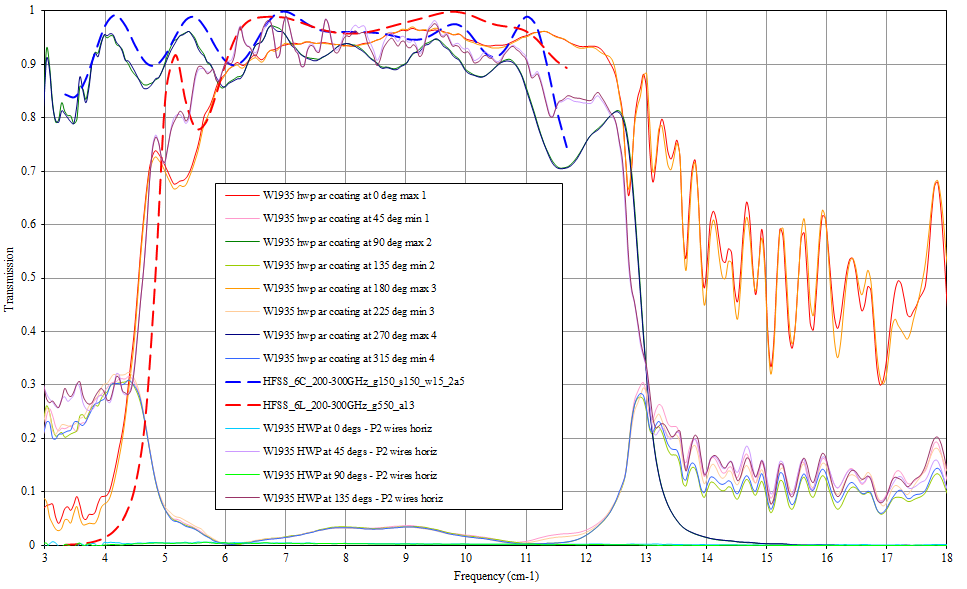
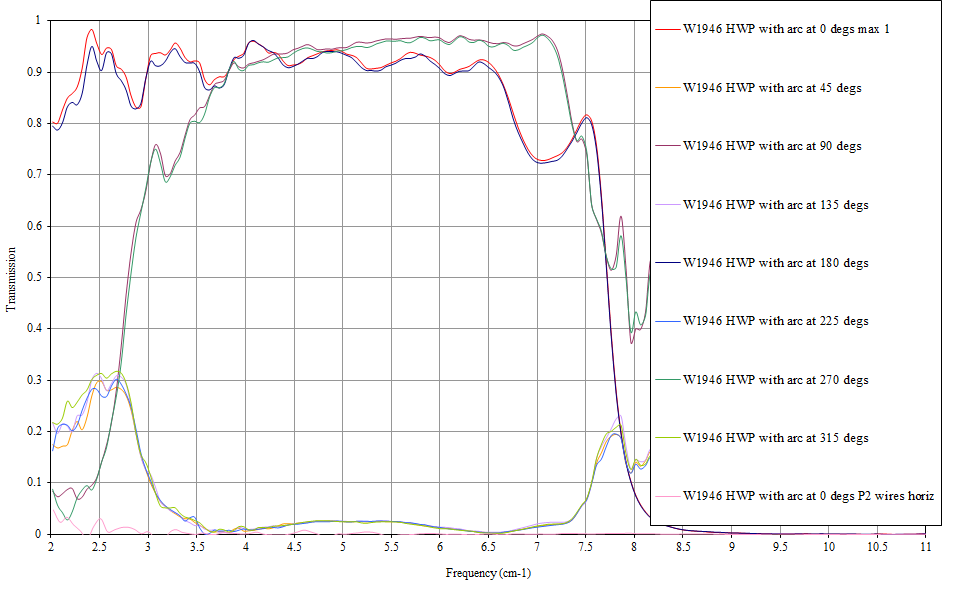
October 2nd 2014
04h40 UT: Stop Compressor. T_BM=88mK , T_still=690mK, T_4K=5.18K, J4 at 340mbar.
06h20 UT: T_BM=89.2mK pretty stable (DeltaT_BM about 0.1mK over 1h), T_still=750mK (DeltaT_still about 50mK over 1h), T_4K=5.26K (DeltaT_4K about 100mK over 1h), J4 at 480mbar increasing (slope 70mbar/1h).
08h00 UT: 100mK stage temperature regulated at 150mK.
20h00 UT: T_BM=150mK regulated, T_still=650mK stable, T_4K=5.18K (DeltaT_4K about 300mK over 12h), J4 at 540mbar; stable.
October 3rd 2014
Nicolas and Alessia joined the telescope.
STATUS OF THE INSTRUMENT
06h10 UT: T_BM=150mK regulated, T_still=650mK with 2mK variation over 12h, T_4K=5.18K (DeltaT_4K about 300mK over 12h), J4 at 540mbar; stable.
21h25 UT: T_BM=150mK regulated, T_still=687mK stable, T_4K=5.23K (DeltaT_4K about 15mK over 12h), J4 at 550mbar; stable.
First preliminary configuration with the window:
div_kid set at 16 which means a sampling frequency equal to 59.6Hz. If it works correctly we will never change this from here after.
1mm DAC gains: 20-20-20-35-44. General niveau: 6., Att. inj. 25dB (mounted into the NIKEL between the first ampli and the mixer, not changeable) + 5db at "In from Cryo"
2mm DAC gains: 20-23-20-33-50. General niveau: 5., Att. inj. 20dB (mounted into the NIKEL between the first ampli and the mixer, not changeable) + 5db at "In from Cryo"
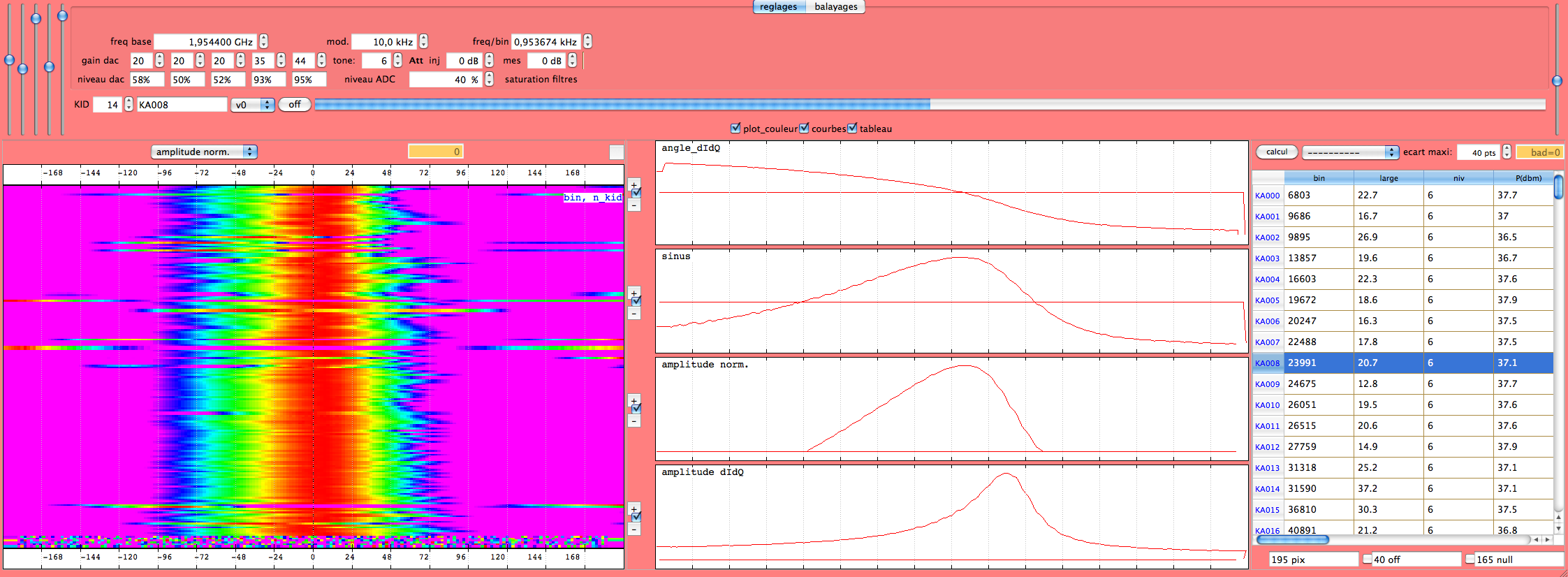
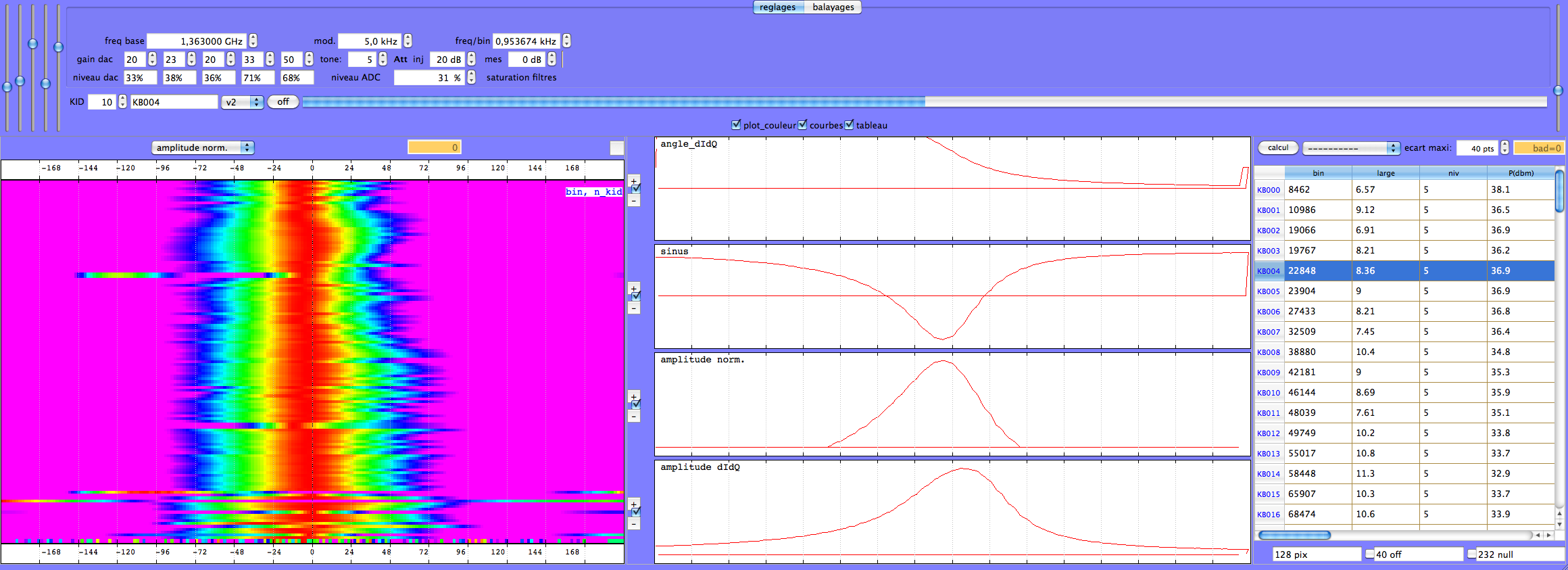
The level of the white noise is similar with respect to the one measured in the same conditions during the previous run, BUT Strong and several peaks are present. TO BE FIXED.
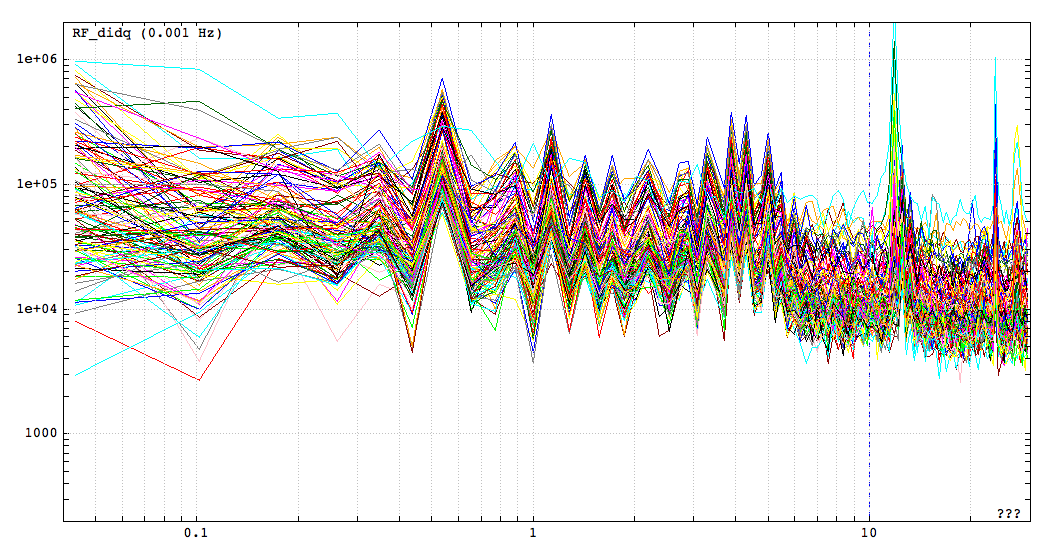
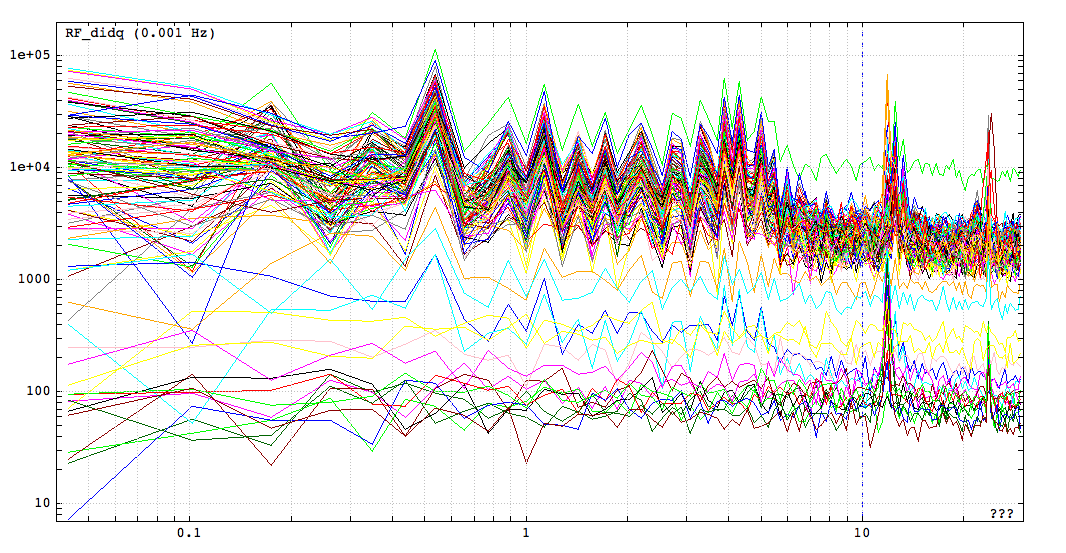
STATUS OF THE POLARISATION FACILITIES
After the test of the HWP C stacks Cardiff measured the L stacks and they seemed to perform reasonably well. They clamped together the L and C stacks and they did preliminary tests rotating the stacks 'by hand':
- - the transmissions integrated across the band are within ~1.5%; - the cross-pol, again integrated, ~5%;
The 'clamped' stacks have been sent to the clean room people, just a few minutes before they left.. and it will be now hot pressed and anti-reflection coated!
On Monday morning the mesh-HWP will be taken out the oven, cut to the 11.9 cm required diameter, and finally tested with the FTS. the performance in this final version could be better due to the presence of anti reflection coating and the fact that the 1mm and 2mm bands are much narrower than the spectral band tested with the FTS.
Aurelien Bideaud volunteered to come up at IRAM on Tuesday with the waveplate for staying a couple of days. We are organising flights and accomodation. Thanks Aurelien!!!
October 4th 2014
09h00 UT: Nitrogen refill in the trap
Connections fixed in the HWP modulator, it turns and the top signal is present. Finally!
Last modifications of the acquisition software still not working. I am using the SVN version 5360.
Noise is still present in the timelines for both arrays. It seems not to depend on acquisition software (noise is also present in the I and Q signal). I tried several things to fix it without success:
1) Changing the modulation and the sampling frequency.
2) Playing with cables
3) Stopping the 100mK temperature control
4) Playing with a drill close to the cryostat.
5) trying to attenuate the vibrations of the cryostat due to the pumps.
19h25 UT: T_BM=150mK regulated, T_still=672mK with 10mK variation over 12h, T_4K=5.22K (DeltaT_4K about 10mK over 12h), J4 at 547mbar; stable.
Alessia and Nico have been working on the pipeline and the set up.
October 5th 2014
11h00 UT: T_BM=150mK regulated, T_still=665mK with 7mK variation over 12h, T_4K=5.23K (DeltaT_4K about 1mK over 12h), J4 at 554mbar; stable.
The HWP modulator has been installed in front of NIKA. The prism fits well too.
October 6th 2014
12h30 UT: T_BM=150mK regulated, T_still=659mK with 5mK variation over 12h, T_4K=5.16K (DeltaT_4K about 7mK over 12h), J4 at 560mbar; stable.
- We created two parameters files: the first "run9.txt "corresponding to the same parameters of run8.txt (made on the sky) but with the new syntax for the instrument and a higher sampling frequency. The second is "run9_300K.txt" corresponding to the best tuning for 300K background (cryostat window open to the cabin)
-The strange pulses observed in the signal for both arrays are still present today . Yesterday morning for few hours this signal was strongly attenuated (almost disappeared). Then in the afternoon it appears again.
In the next two plot We show the comparison between the spectrum made on 18 random pixels between yesterday and this morning
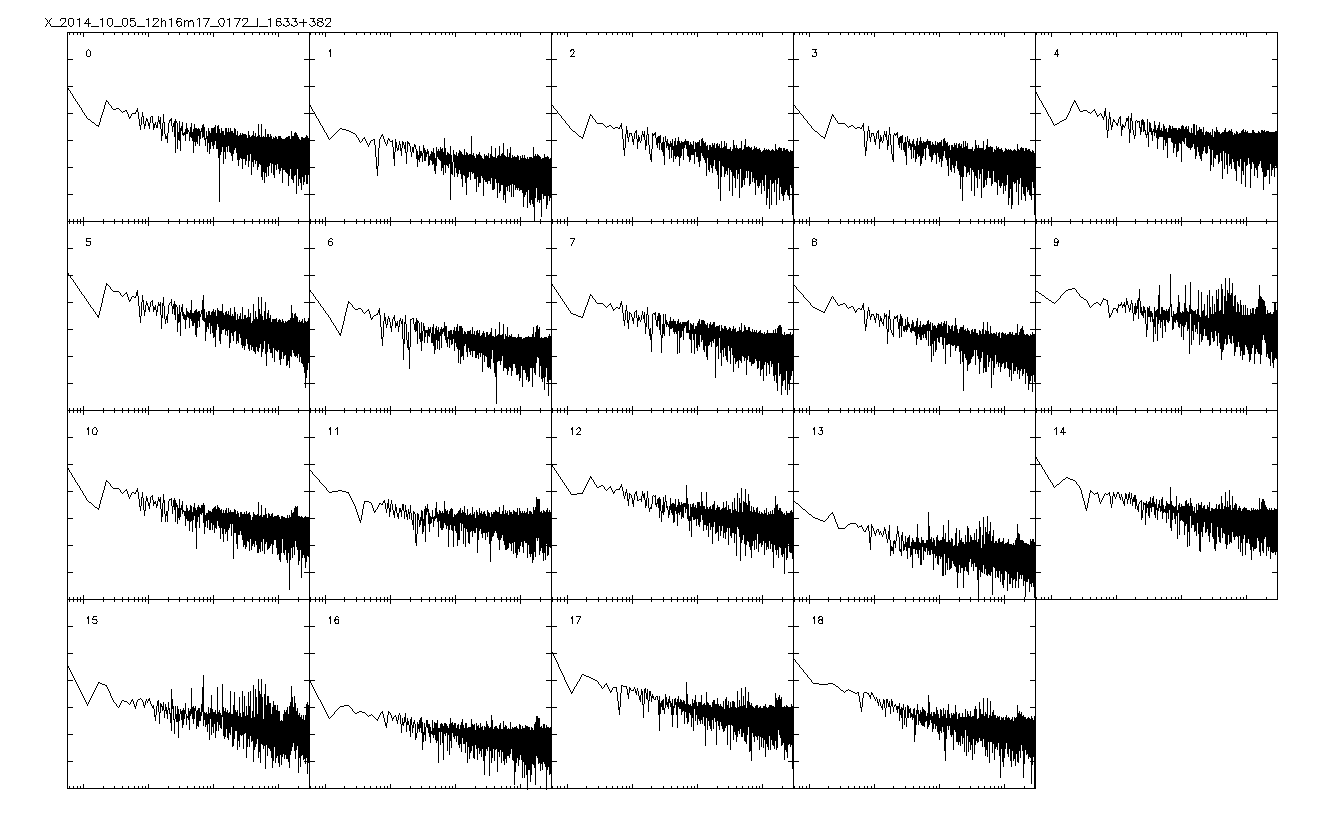
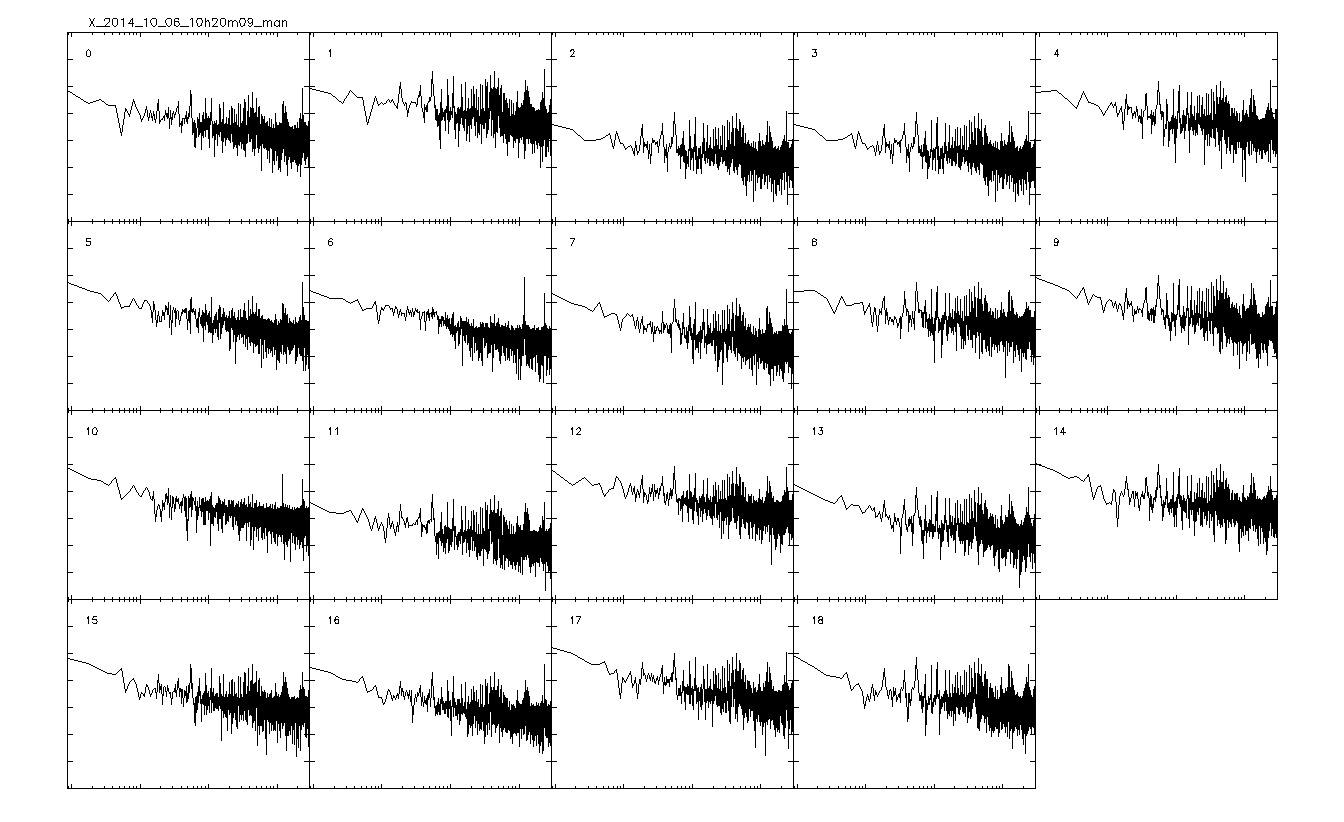
October 7th 2014
- Aurelien, Vincent and the HWP arrived at the telescope. We installed the HWP in front of the cryostat. The Idea is never to touch at that even for temperature measurements. We have some plot on the HWP test performed in Cardiff with some results showing the integrated transmission in the two NIKA channels:
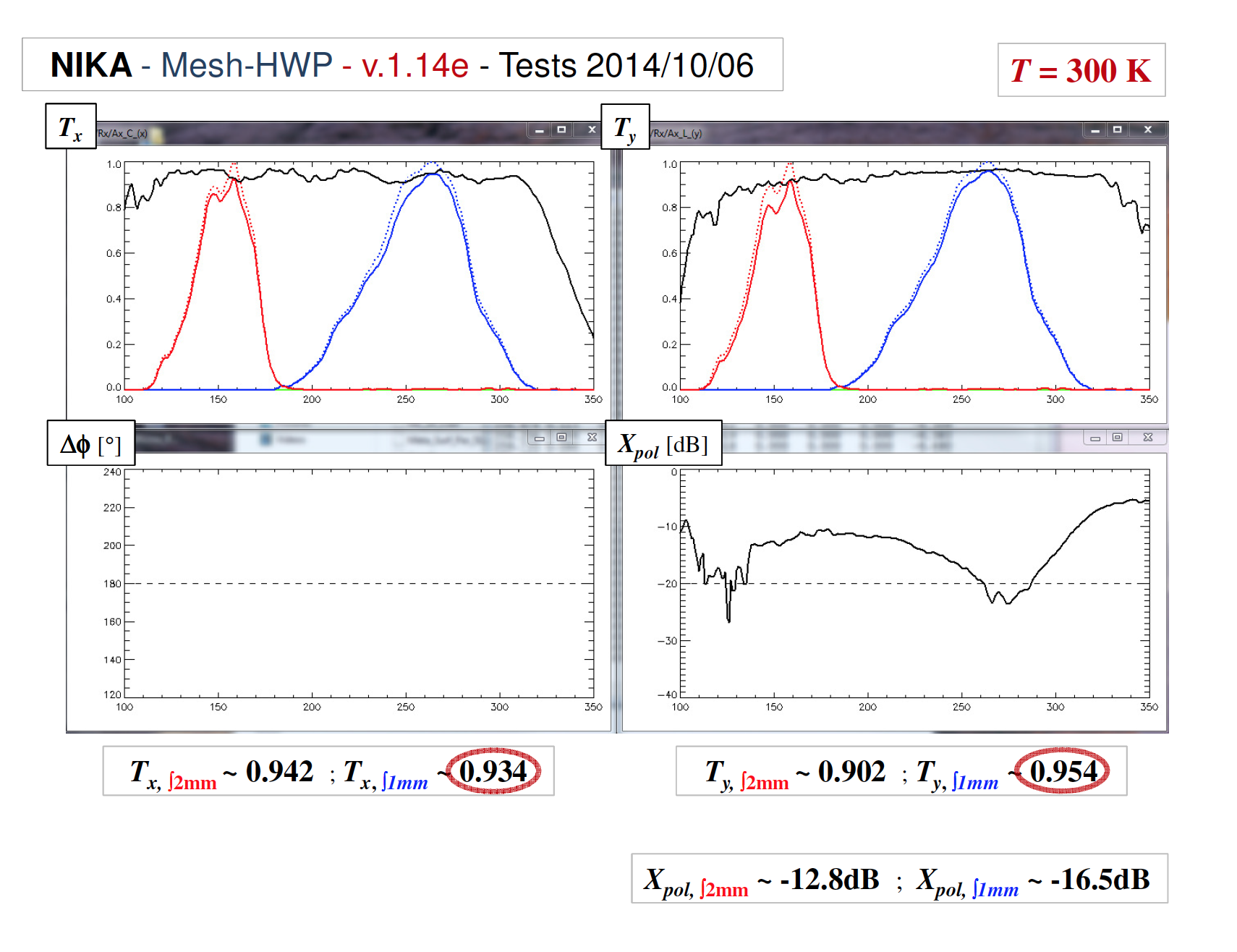
- Parasitic signal problems solved! We found that the origin of the periodic signal was the MM3. It was stopped and the signal became clean again. The pratical consequence is that we cannot directly monitor the temperature of the cryostat. In addition the control of the temperature is off making the arrays colder. The observation temperature for this night is about 90mK.
15h30 UT: EYE IN THE SKY.....FINALLY! We start with the NIKA sampling frequency of about 59 Hz.
Noise for 40 degrees elevation with 0.44 (1mm), 0.29 (2mm) opacity. Remember that the 300K HWP is in front of the cryostat (eps<0.13 ?). 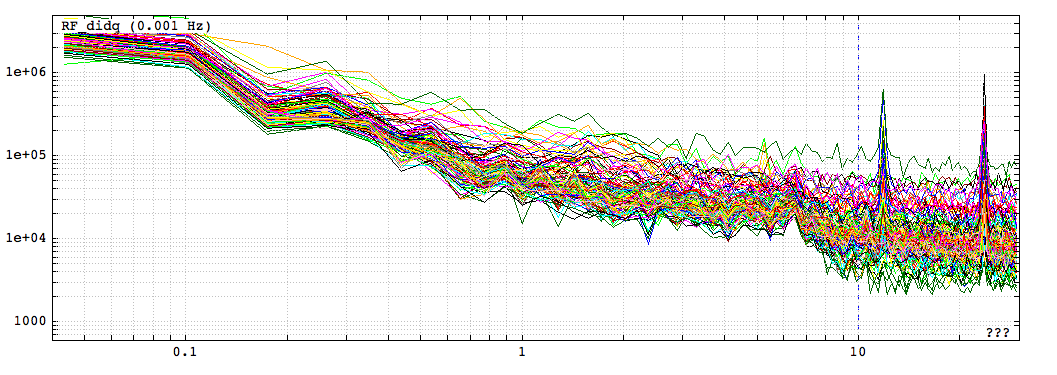
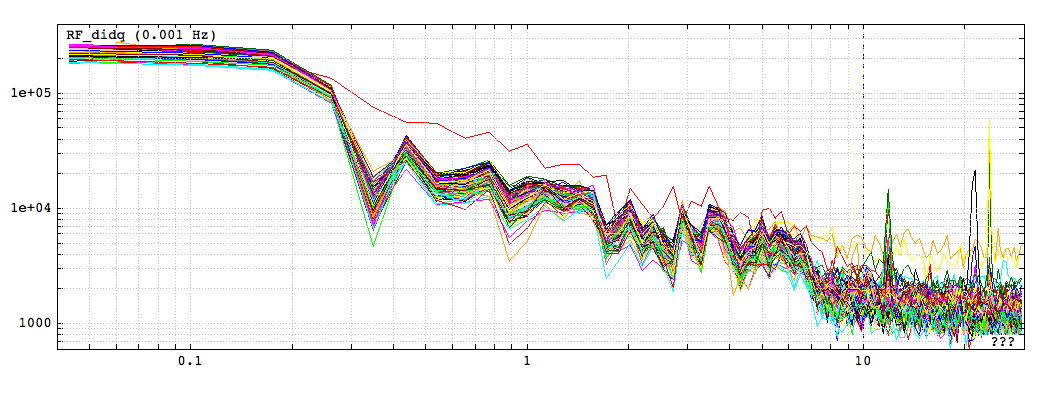
WOLLASTON PRISM FIRST LIGHT ON URANUS!!!
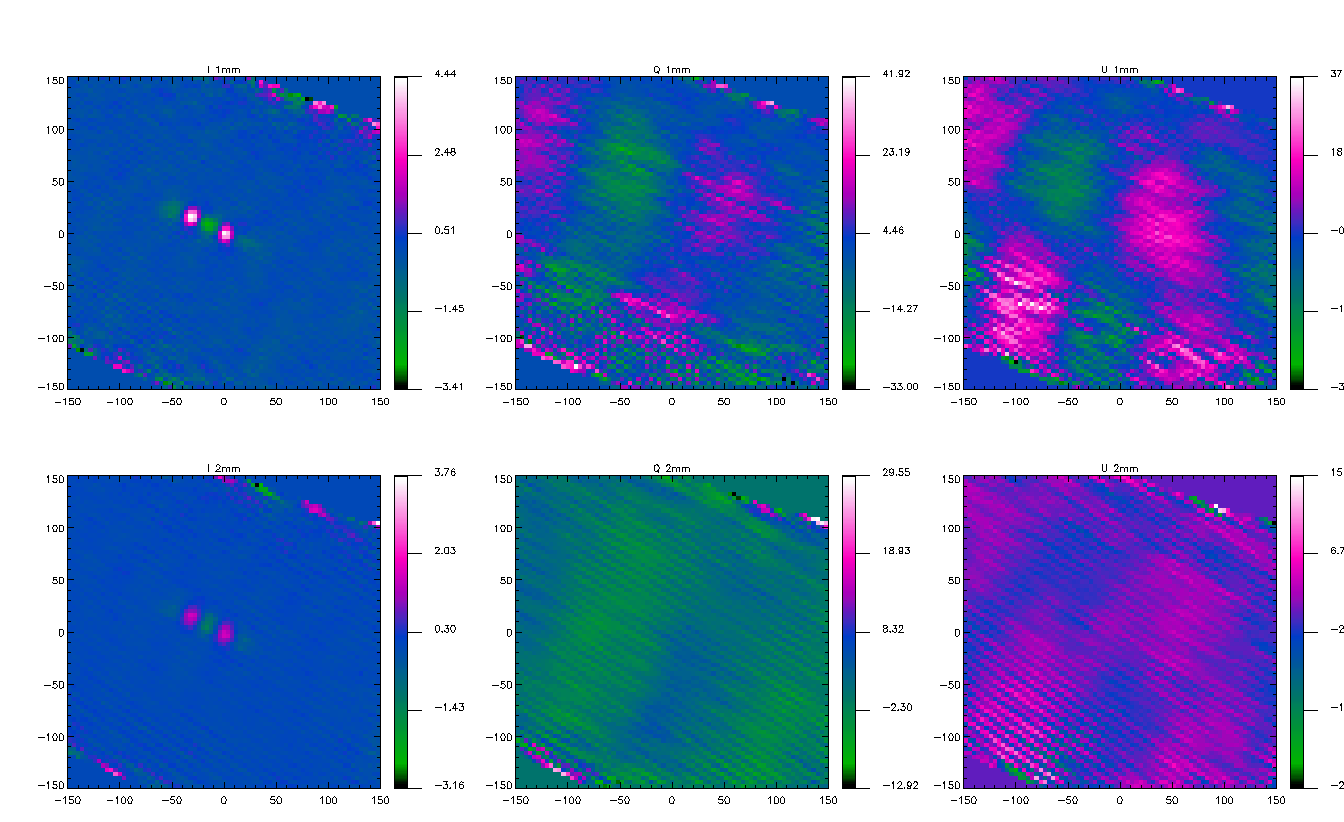
Observations: see summary in the day to day logbook of observations; observation sheet written manually because the scans don't appear in TAPAS.
October 8th 2014
02h10 UT: T_BM=90.1mK, T_still=749mK, T_4K=5.20K, J4 at 550mbar. I stop the MM3. Good night from Pico.
Technical time (from 10:00):
Replacement of the MM3 with the spare one:
- This didn't solve the problem (the 1,2,3 regular peaks are here and strong).
- Amplitude of KIDs dropped when MM3 powered up.
- Amplitude of KIDs dropped again when the MM3 started acquisition, and peaks re-appeared.
- Original (calibrated) MM3 put back in place.
HWP motor unit removed to try and adjust the clamping of the HWP:
Glitches stopped!!! Not sure if the electrical disconnection of the HWP motor unit is the reason for that. To be checked when re-connecting the unit.
- Glitches back once the MM3 is properly configured (ranges,...), with motor unit still disconnected.
MM3 parameters:
- KIDs amplitude changing when Channel 1 Irange changes ; no change in phase ; impact both arrays.
- Channel 2 reacts to modifications of channel 1 parameters (Irange).
Previous tests made:
- Shorted NIKELs: no visible glitches.
- Measure with the VNA (NIKEL disconnected): glitches are here.
Possible things to do during technical time to investigate the gliches issue:
- Replace the iMACRT unit (need to access the pump unit, or find an adapted cable to connect it outside).
- Check the voltages of the cold amplifiers: are they susceptible to a change of the Channel 1 Irange?
20h00 UT: We start with the NIKA sampling frequency of about 47 Hz. Observations: see summary in the day to day logbook of observations; observation sheet written manually because the scans don't appear in TAPAS.
October 9th 2014
-- Installation of the diode calibrator on the elevation arm next to M3. Use slot of telescope stopped due to wind in the afternoon to test it. Signal of the diode very strong, can be attenuated with the control box, but much more noisy than the lab tests. We don't understand why. Remove the small mirror that we put at the centre of the vertex window to reflect the signal from the diode toward the instrument. Without the mirror we still see the diode very well, we check with an eccosorb on the diode horns that we indeed see the diode signal. Some power from the diode must be reflected toward the detectors by the polystyrene window, or more probably by the secondary mirror M2. Noise on the diode signal still there.
-- The computer of the mppsync card (HWP modulation control) crashed 30 min before the beginning of the observations. Find another Linux computer to plug on the card and call Olivier to help install the software. The computer was put in the cabin and we observed a strong impact on pixels producing lines in the spectra.
-- Big problem with tuning and acquisition. Alain worked hard on finding a patch. In the meantime, we observed using sweep in frequency before each scan. Strange spikes in the data. Then too much wind, stopped observation at about half of the observation slot. Tough night, possibly no scan with useful data.
October 10th 2014
-- The tuning and acquisition work again. The Xcode must be changed because the origin of the problem has not been found.
-- Several tests were made in the cabin to attenuate the RF noise in the power spectrum producing a ray at about 12Hz (the sampling frequency is 59.6Hz).
-- Observations started at 18:00 UT. Noise for 40 degrees elevation with 0.6 (1mm), 0.45 (2mm) opacity. The 300K HWP and WG are in front of the cryostat.
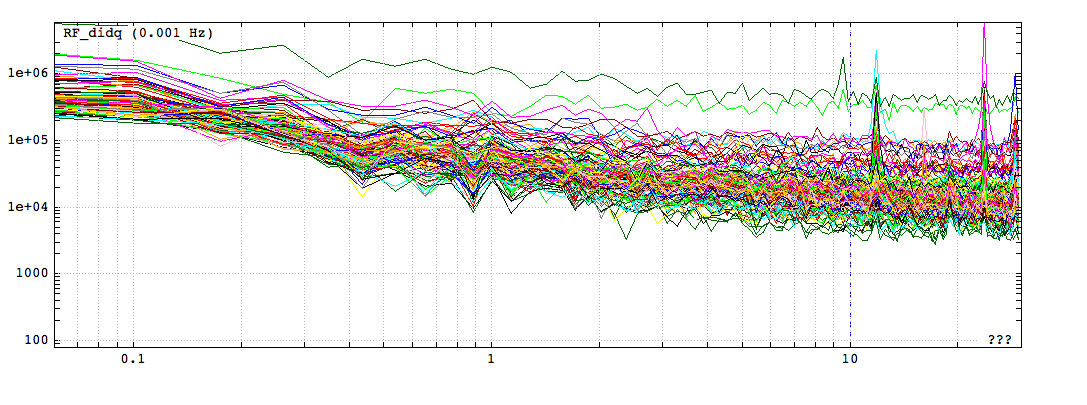
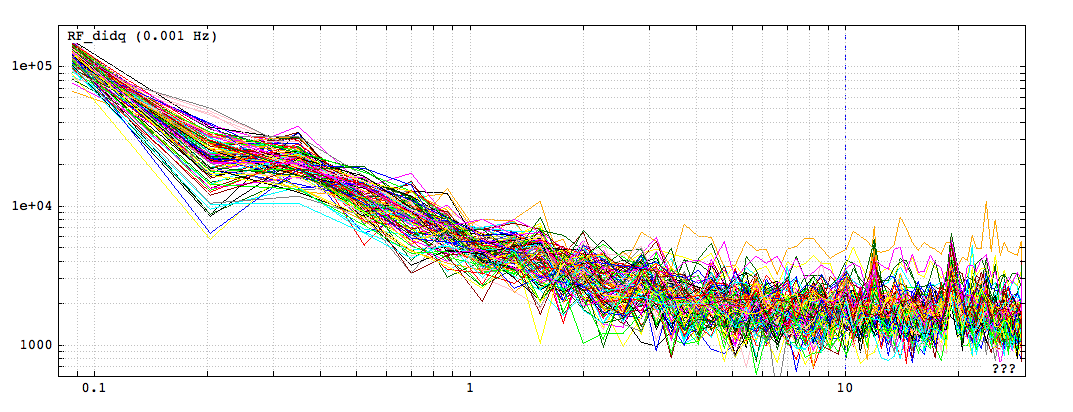
-- The communication with the antenna does not work as well as we want. Several annoying holes are present in the data. We chose not to use the antenna in the acquisition on archeops 35 and archeops 9 (the ones producing files in sami) and we keep in archeops 10 in order to monitor the antenna errors.
-- Quasar BLLAC has been integrated 10 times at different elevations with the HWP rotating at 1.89Hz (8 independent points) and the WG. NGC7538 over 10 maps with and without modulation on HWP+WG. 2 maps (2x2 and 2x6 arcmin)on CasA with a superposition of 2x2 arcmin.
October 11th 2014
16:44 UT: Very bad weather, we are in the middle of a storm . Observation should start at 00:00 UT. Finger crossed.
Alain changed his monitoring script to record holes of MJD antenna in a file with time stamps. Albrecht looked at the Antenna FITS and didn't find the numerous holes we mentioned. Besides the holes are not the same the 3 NIKA acquisition computers. So the problem seems to occur on the UDP packets sent from NCS to NIKA computers. We looked at the Ethernet cables: two that are plugged from the NIKA router to the control room look pretty badly isolated. We use another cable; it's too soon to say if we really found the culprit, but so far we see only few holes, much less than before.
No observations tonight, the wind is very strong, with peaks up to 190 km/h !
October 12th 2014
Mppsync is dead! one of the mosfets (STP40NF10) is broken and probably has injected too much current in the step motor (we saw some smoke emitted from the motor!). We do not know if the motor is still ok because we need to replace the mosfet. We do not have a spare so we are trying to communicate with Santiago to recover a new one for tomorrow. The idea for this night (if weather will be good) is to take maps at different fixed angles of the HWP. We also plan to calibrate the optical axis of the HWP using the gunn diode.
Santiago went in the office down in Granada (on a Sunday evening, thanks Santiago!) and found a transistor that doesn't have quite the specification required but close enough that we should be able to use it for the Mppsync, using an external power supply; we'll do that tomorrow.
- Calibration of the HWP optical axis done. Using a power supply we cant put current in the step motor and fill the steps, so motor is not dead. We are ready to observe with fixed position of the HWP.
- Monitoring the acquisition process with the new ethernet connection to the router in the backend room: holes in antenna MJD are still there after all. We don't know why.
- In the evening we changed from UDP protocol to TCP ==> no more holes in MJD antenna packets. He also changed acquisition in order to include the gunn diode so we increase the number of parameters from 4 to 6: I, Q, dI, dQ, pI, pQ (e.i. dIdQ = frequency modulation, pIpQ = optical power modulation).
- Observations start at 00:30 UT an half hour late because of the bad weather. Now the opacity is getting better and better, but the sky is very turbulent.
